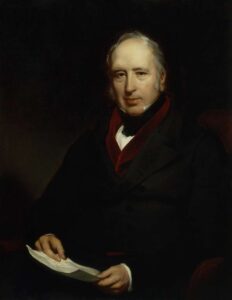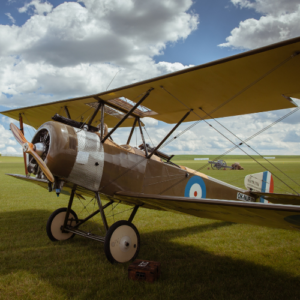The evolution of aerospace design and manufacturing has had a significant impact on people and the course of humanity. Aerospace engineers have given us the ability to travel the world, explore space, and defend nations.
We’re Airframe Designs, an aerospace engineering company so the history and continued development of the sector are obviously of huge interest to us! In this article, we are going to take a quick look at the history of the aerospace industry, as well as some of the most prominent aspects of design and manufacture.
Early Days of Aerospace Design and Manufacturing
Firstly, what is aerospace design and manufacturing? Aerospace engineering, which encompasses design and manufacture, is quite simply the development of aircraft, including aeroplanes, helicopters, and spacecraft. The field used to be referred to as aeronautical engineering but evolved to encompass the design of spacecraft with the term aerospace engineering first recorded in 1958. Although there is a lot of overlap between spacecraft and aeronautical design, the two are technically two separate branches of aerospace design.
It’s difficult to credit any one person with the ‘invention’ of aerospace design, as the evolution of the discipline encompassed theories and work already known about in other disciplines and is the culmination of many individuals’ works.
 However, Sir George Cayley is regarded as one of the most important people in aerospace history. Sir George, an engineer, is regarded by many as the first to truly understand the forces that enable machines to fly! It is known that he was the first to come up with the concept of a modern fixed-wing aeroplane in 1799.
However, Sir George Cayley is regarded as one of the most important people in aerospace history. Sir George, an engineer, is regarded by many as the first to truly understand the forces that enable machines to fly! It is known that he was the first to come up with the concept of a modern fixed-wing aeroplane in 1799.
Although Sir George is called ‘The Father of Aeronautics’ by some, his name may not be as recognisable to the everyday person as that of the Wright Brothers. Orville and Wilbur Wright can claim the first sustained ‘flight’ of an aircraft, in 1903. They are renowned for inventing and flying the first motor-operated aeroplane.
Aerospace Design Progression
Aviation development happened quickly, perhaps spurred on by the WW1 and 2 conflicts, with the first jet engine craft becoming operational towards the end of the Second World War.
The invention of the turbojet engine was one of the most significant developments in aircraft capability and is all thanks to British aerospace pioneer Frank Whittle, who developed and tested the turbojet engine in the 1930s and 40s.
Although commercial travel had been developing since the inception of the first flight, it wasn’t until the 1970s that flying became more commonplace.
One of the key innovations in the commercial sector and for passenger travel was the introduction of the jet airliner – up until 1949, the aviation sector was dominated by propeller-driven aircraft. The first prototype for the British designed Comet flew in 1949 and entered service in 1952 as the first commercial jet airliner.
Meanwhile, the development of spacecraft culminated in 1969 when Apollo 13 landed on the moon, triggering fierce competition across the globe to further develop spacecraft design.
The evolution of aerospace design is fascinating, particularly when you consider the first flight only happened in 1903 (lasting 12 seconds) and we now have jets so fast that they break the sound barrier!
Technological Innovations In Aerospace Design
So what are the technological advancements in the aerospace industry that have allowed humans to travel the skies and beyond?
Arguably, the introduction of jet propulsion is the most important advancement in flight – by the 1950s the jet engine was used in almost all military and defence craft, and by the 1960s all large commercial craft were also jet-propelled.
The high-tech, safe aircraft we have today are a culmination of many developments including the use of composites such as carbon fibre to reduce the weight of flying craft, the use of Computer-Aided Design (CAD), and Computational fluid dynamics (CFD).
CAD was and continues to be an important innovation because it enables aerospace designers to create new aircraft and for the designs to be analysed without having to be physically built first. This has sped up design and innovation because it also reduces the cost of development as adjustments can be made digitally. 
The overall innovation in computing and software has massively benefited the aerospace design industry as well as the analysis and certification of new craft. Computer modelling has helped make flying safer and more efficient.
Also known as integrated design and analysis in the aerospace sector, diverse teams come together to help create new craft and improve ones that already exist. This integrated approach has further sped up innovations in aerospace design.
Aerospace Certification and Regulatory Landscape
There are stringent certification requirements that aerospace products must meet to ensure their airworthiness and safety, and the regulatory landscape has evolved alongside design innovation. Starting in the 1920s, when the US passed the first laws to regulate aviation up to the modern-day analysis of accidents for future learning and safety improvements.
Today, the UK and European regulatory landscape is managed and regulated by the UK Civil Aviation Authority (CAA) and the European Aviation Safety Agency (EASA).
As aerospace designers and manufacturers, staying up to date with certification and regulations is a top priority for us and we assist clients worldwide with analysis and certification. There are many hazards aircraft can encounter including bird strikes, structural failure, and environmental and human factors.
Thankfully, modern-day techniques allow us to predict and help mitigate many hazards. Air travel today is safer than ever.
Modern Aerospace Manufacturing Techniques
Aerospace design and manufacture have significantly changed over the last few decades. Manufacturing techniques used today contribute to faster production cycles, reduced costs, and improved quality.
Modern methods in aerospace manufacture include precision machining, automated assembly, and in more recent times an increase in additive manufacturing (3D printing).
Aerospace materials have advanced significantly too – traditional aluminium structures are still used but we now have access to modern materials and techniques such as carbon fibre, ultra-lightweight sandwich panels, titanium, and 3D printed polymer products.
In addition to advanced manufacturing, traditional techniques such as CNC machining and sheet metal fabrication are still commonplace.
Contact Airframe Designs
We hope you enjoyed this brief overview of the evolution of aerospace design and manufacture – aerospace engineering is such a vast and complex area it was difficult to cover everything in one post!
Whilst you are here, why not take a look at some of our case studies and see how our company contributes to the modern aerospace sector through design, manufacture, and certification. Founded over ten years ago, we have worked worldwide with many recognisable aerospace names, in a variety of sectors including commercial, defence, and the VIP sector.
Please contact us if you are interested in collaborating on your aerospace project.

